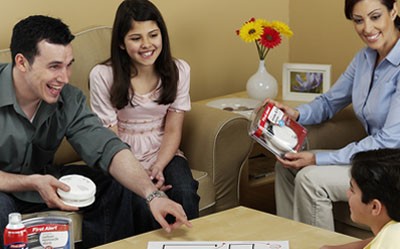
Study Reveals How Moms Shop for their Kids
Young America, a leading brand of infant-to-teen furniture, has announced the results of a national study with moms across the United States.
With 11,000 babies born daily in the U.S., raising a child costs an average of nearly $11,000 in the first year; $220,000+ for the first 18 years. The study, ”All Decked Out: Shopping for Babies and Children,” explored how 300 women, from expectant mothers through moms with teens, shop for children’s items.
The study was conducted between Feb. 28 and March 3, 2011 by Q & A Research, Inc., Novato, CA. The results were announced last month, April.
“We undertook this study to better understand the mindset of mom when she walks in a store looking for items for children,” said Neil Mackenzie, marketing director for Young America.
It’s well known that there is a lot of preparation to have children. Women are altering their work schedules (50 percent), setting up an education fund (45 percent), arranging daycare (35 percent) and in-home help (32 percent), and talking with their other children (43 percent) about the impact of a new baby.
They also are highly conscious of the financial and lifestyle impact that a baby can have on themselves and their families.
However, decorating the baby’s room is second only to stocking up on supplies when preparing to accommodate a newborn. Tops on the shopping list are furniture essentials: New cribs and baby hampers (58 percent), dressers (55 percent) and changing tables (54 percent) and a rocker (46 percent). The things they add to their rooms last are mirrors, bookcases, and nightstands.
Even in today’s tight economy, nine out of 10 moms look to buy new furniture from stores where they can see, touch, and feel each piece of furniture, and understand how it works.
The big box stores, like Babies R Us (30 percent), Walmart (18 percent) and Target (15 percent) are where moms may start shopping. Half of moms look to the Internet to buy new select items. Less than 20 percent of women will go online or to stores for any used furniture for their children.
The good news for independent retailers: 40 percent of moms shop more than one store and 13 percent chose local baby boutiques for the items on their shopping lists. The reasons for shopping around primarily included price (61 percent), but they also were looking for the ability to customize their nurseries and child’s rooms (43 percent) and for style variety (39 percent).
In the study, 92 percent seek safety first when deciding one brand over another and what goes into a child’s room.
Going from baby to toddler again brought out the female shoppers. 73 percent of moms will shop again for new furniture when their child reaches the age of 18 months to three years.
Eight in 10 of these women will purchase an all new set of furniture or will add new pieces to the room. The most purchased item is a new bed, by 84 percent of these women, but their focus is on adding more storage and accessories to the room, including a toy box (54 percent), dresser (42 percent), bookcase (31 percent), closet organizer (20 percent), armoire/door chest (19 percent), wall storage unit (15 percent) and decorative accessories (47 percent).
Interestingly, the study says, when the family ages to be tweens or teens, eight in 10 moms go shopping again; and 54 percent of them buy full new sets or new pieces.
For most moms-to-be, the list of items for their children is long. But, when they find the perfect bed, or chest, or dressing table, nine out of 10 women are likely to tell their friends about their experience in a store. And, good news for dads-to-be, you are first on her list (58 percent) when seeking an opinion about what to buy; grandmothers ranks second (13 percent).
With so many babies born in the United States every day, there’s a whole lot of decorating going on. For retailers, there’s a big opportunity to capture her attention if they remember that she arrives with a list and is in a very practical frame-of-mind when shopping.
She looks for safety first and wants to touch, see and learn about how products work. If a dad joins her on the shopping trip, pay as much attention to him as you do her, the study suggests.



